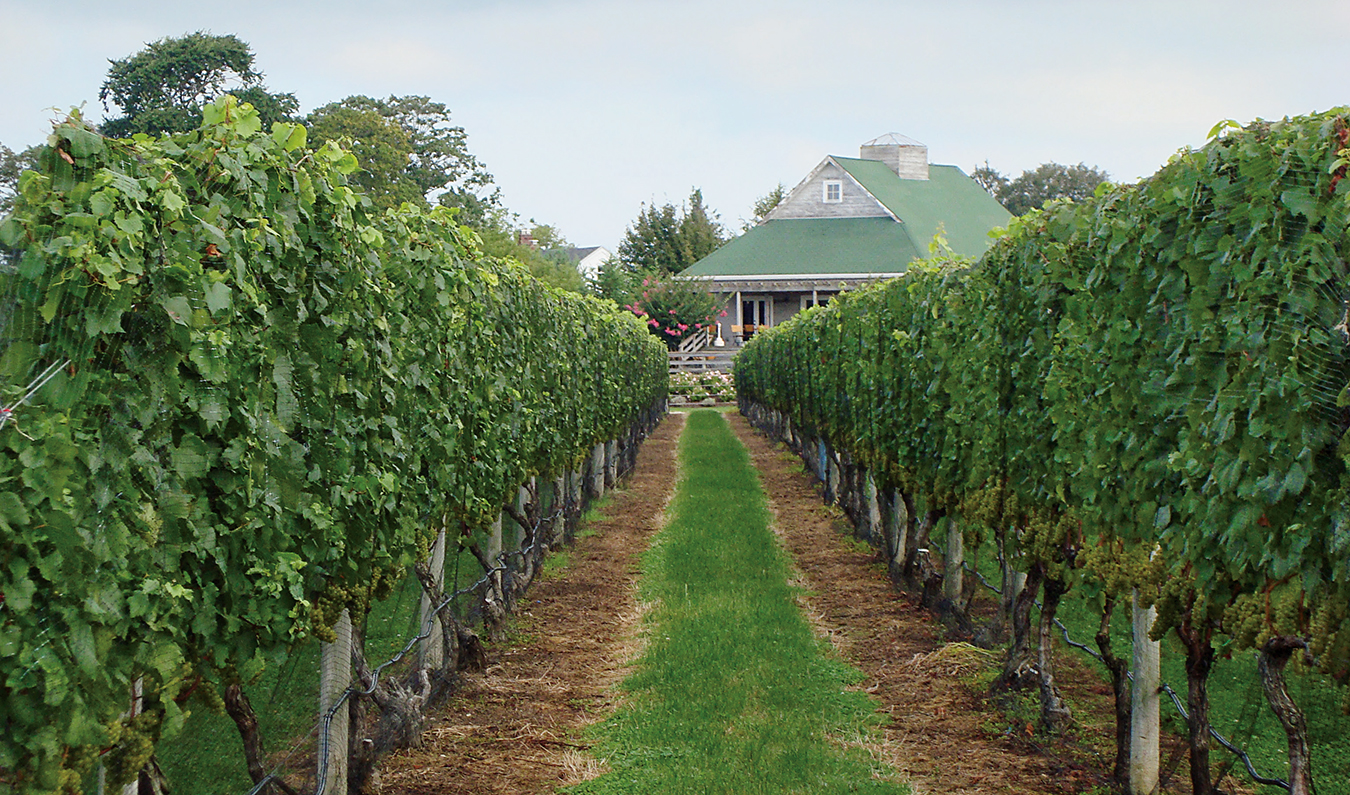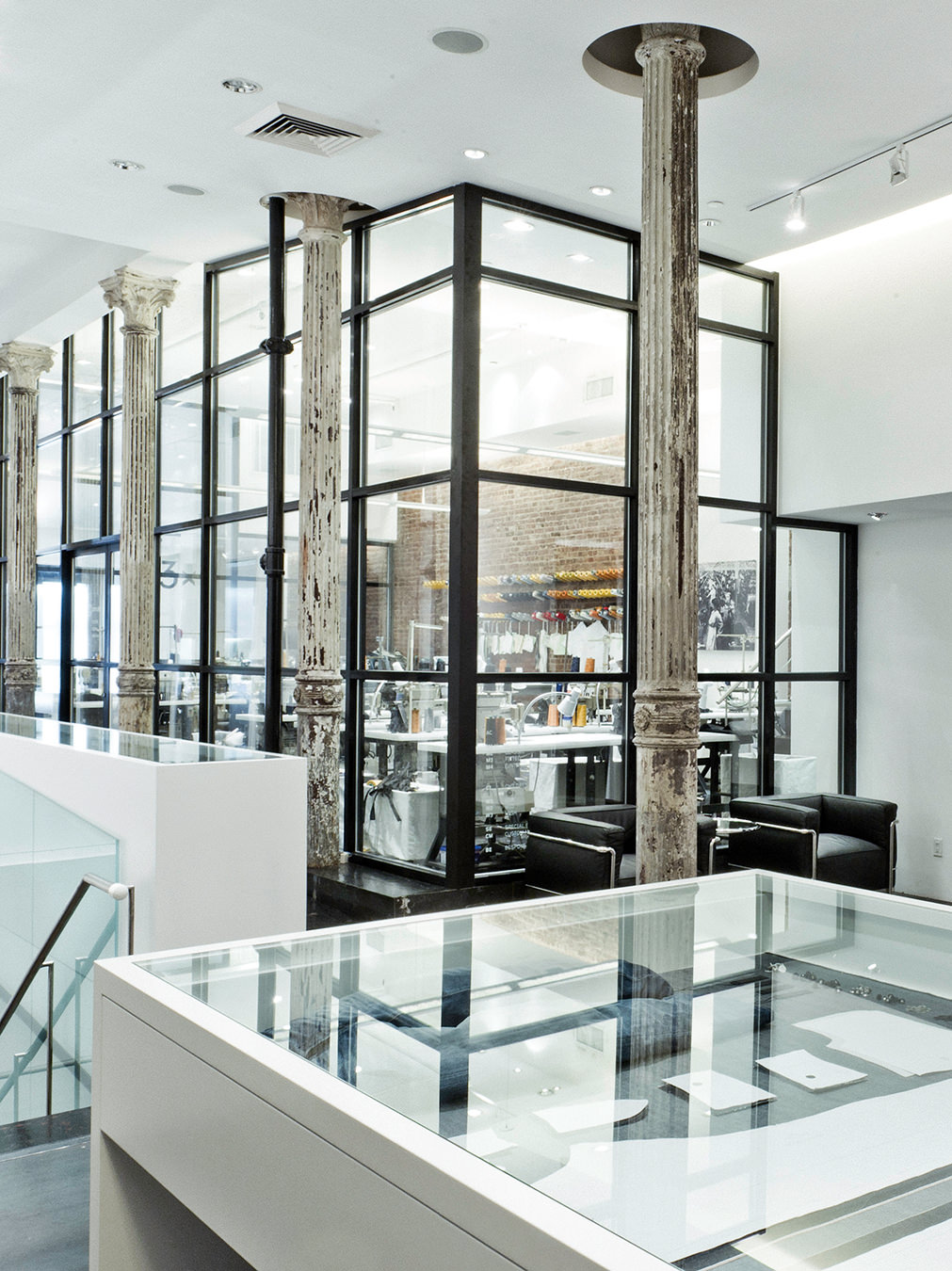The Wines of Long Island, New York
A case for respect.

New York’s best-kept secret might be a sleeper play off Broadway, a new bistro in the Meatpacking District, or a hot club in Chelsea. Or it just might be the vibrant wine region on Long Island, a two-hour drive from the city. If you can tear yourself away from the bright lights for a couple of days, you can enjoy wine tourism in a rural landscape that’s 150 kilometres and a million miles from Manhattan.
What’s most striking about much of Long Island is how sparsely populated and rural it is. Driving east, evidence of the city soon recedes, giving way to fields, farms, and villages. Much of the architecture is reminiscent of New England. Some of the oldest agricultural land in the United States is on Long Island; Wickham’s Fruit Farm works land that has been continuously cultivated since 1661.
The vineyards started growing on Long Island much more recently, as the first was planted in the early 1970s. Most are located on the east end, where the land splits into two forks—roughly in the shape of a lobster claw—that are separated by sheltered bays. The North Fork is densely populated by dozens of wineries, while the South Fork, which is connected to the other by ferry, has only three wineries so far. Regular visitors to Long Island—including those who spend their summers in the Hamptons, which is on the South Fork—know the wineries and their wines well, but outsiders are usually surprised to discover them.
What makes wine possible here is Long Island’s long, warm summers—the very summers that have attracted people to the east end of Long Island for decades and made the Hamptons such a desirable escape from the city. The vineyards are never more than three or four kilometres from the surrounding waters of Long Island Sound, the Atlantic Ocean, or the bays that separate the two forks. The water, relatively warm in winter and cool in summer, moderates the temperatures on land throughout the year. The storms that often buffet the East Coast generally stay to the west or south, but enough rain falls so that there’s seldom any need to irrigate the vineyards. During the summer, the sunshine and warmth ripen the grapes, while cooling winds promote crisp acidity.
The result is a cool-climate region with a long growing season that supports grape varieties that surprise many people. Although the vineyards grow a wide range of varieties, including many whites, the stress is on reds. There’s near-universal agreement that merlot is making Long Island’s name as a wine region because it can be counted on to ripen every year, but other Bordeaux grapes like cabernet franc and cabernet sauvignon also do well.
At Wölffer Estate, winemaker Roman Roth says that merlot does the best as a varietal or a main part of a blend. “It ripens consistently, and in a blend it’s more forgiving,” he says. He makes several merlots and merlot-dominant blends, including Christian’s Cuvée, which is 90 per cent merlot and sells for $100 (U.S.) a bottle. “People said the owners had lost their minds” when the price was set for the first vintage in 2000, he says—but they sold 1,200 bottles. The wine shows concentrated fruit with breadth and depth, ripe tannins and well-calibrated acid, and the style is echoed through the other merlots in Wölffer’s portfolio.
Merlot is the main component of many famous wines from Bordeaux (think of Château Pétrus) and elsewhere. But there’s a widespread sense that Sideways, the 2004 wine-themed movie said to have given pinot noir a boost, side-swiped merlot with a couple of pithy lines (“If anyone orders merlot, I’m leaving!”). Pouring his Reserve Merlot, Adam Suprenant, winemaker at Osprey’s Dominion Vineyards, comments, “This is my answer to Sideways. You need to have cool-climate merlot. The merlots in the movie are from a region that makes alcoholic fruit-bombs. The balance on these Long Island wines is unbelievable.”
There’s no argument about his merlot, which shows ripe fruit complexity and fresh acidity. Merlot from warm regions can often be fruity and flat, but when grown in cool, sunny conditions, it shows solid, layered flavours and a refreshing texture. Long Island’s climate is close to ideal in most years, and the reds rarely show any green, vegetal notes. Even in colder and wetter years, they deliver ripe and solid fruit from start to finish. As for the acidity that’s so necessary for food-friendly wines, Alexandra Macari of Macari Vineyards says, “We love acidity at Macari,” and other Long Island winemakers and owners embrace it as enthusiastically. Dos Aguas, Macari’s merlot-dominant blend of five Bordeaux varieties, is well structured and quite elegant, with a spine of bright, clean acidity.
There’s no argument about Adam Suprenant’s merlot, which shows ripe fruit complexity and fresh acidity.
At Paumanok, winemaker Kareem Massoud (whose parents founded the winery in the early 1980s) agrees that merlot is the variety that ripens most consistently. But he says that at Paumanok, whose vineyards are located on a slightly warmer part of the island, further from the influence of water, “We believe cabernet sauvignon is king. Overall, it can produce top wine here.” His Tuthills Lane Vineyard cabernet sauvignon delivers on the belief, and offers ripe flavours and juicy acidity, but Paumanok’s merlots and Bordeaux blends show the same character. This is what Massoud refers to as the “Island style”, and it is ensured by very careful and sparing use of oak so as not to interfere with the fruit flavours. Fellow winemaker Suprenant puts it graphically: “Oak in wine is like salt in cooking: once it’s in, you can’t get it out.”
It took a long time for anyone to appreciate Long Island’s potential for wine, and several owners cite experiences similar to that of Kareem’s father, Charles, who started Paumanok when he left a career at IBM. “They said, ‘Have you heard what Charles has done? He’s gone crazy!’ ” says Kareem. But despite the young age of its wine industry, Long Island quickly gained official appellation status. In the mid-1980s, it was awarded two American Viticultural Area (AVA) designations, North Fork of Long Island and the Hamptons, Long Island, and a separate Long Island appellation that covers the entire island was granted in 2001.
Long Island winemakers are still learning how to get the best from their land, vines, and grapes. The winemaker at Bedell Cellars, Richard Olsen-Harbich, who’s worked in Long Island wineries since the 1980s, says the area is “still in grade school” as a region. He might be selling Long Island short: his own wines deliver complexity, structure, and balance, and his 2007 Reserve Merlot exemplifies the juicy style emerging as representative of the North Fork.
Over at Laurel Lake Vineyards, Chilean-born winemaker Juan Sepulveda admits that he likes the challenge of working in a region that has less-consistent vintages than his homeland. In Chile, he says, the wines are “bold and big—it’s tough to see diversity.” On Long Island, in contrast, “every year is a new year. Here, my wines have way different identities.” One of his standout red blends, Credence Meritage Limited Edition, is mainly cabernet sauvignon and merlot, and the 2005 vintage shows plush, maturing fruit and firm tannins, but retains Long Island’s signature freshness after six years.
There are also plenty of white wines that shine. At Peconic Bay Winery on the North Fork, Greg Gove makes an aromatic riesling, while at Raphael, winemaker Leslie Howard produces a sauvignon blanc that’s pungent and zesty. Meanwhile, back in the Hamptons on South Fork, Channing Daughters Winery includes a number of chardonnay varietals and blends in its offbeat portfolio. White wines like these pair nicely with Long Island’s cuisine, which is dominated by seafood such as clams, crabs, lobster, flounder, and striped bass. As for the red wines, most have the weight and style to complement the Long Island duck that’s featured on many menus.
It’s taking time for New York’s wine-lovers to realize that they have this resource so close by. More than three-quarters of Long Island’s wine production is sold in the area where it’s made, in winery retail stores, local wine shops, and restaurants. The rest appears on wine lists and wine store shelves in the city and across the state. But although some wineries sell in Vermont, Pennsylvania, and other states, and a couple of them export to Canada and Europe, Long Island remains predominantly a wine destination.
Long Island wraps restful touring around the wineries, with a full spectrum of inns, bed and breakfasts, and restaurants. Wölffer Estates’ Roman Roth describes the area as “rustic, not too commercial—where Napa was 20 years ago.” It’s definitely a contrast with the bright metropolis, and it’s an explorative wine getaway from your next urban trip to New York.




